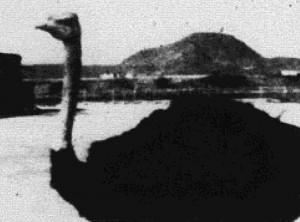
"The Ostrich Story by R. D. Charlton, a PSA member of Alexandra Headland, Queensland, Australia. Roy has many past winners to his credit and this film can only add to them with an unusual subject such as this. This 5-minute 8mm film was awarded an Honorable Mention" PSA Journal, Nov. 1971, 42.
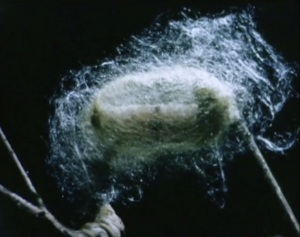
Documental sobre la metamorfosis del gusano de seda desde su nacimiento hasta su muerte, pasando por todos los procesos morfológicos.
A documentary about the silk worm metamorphosis, from its birth to its death, showing al morphologic processes.
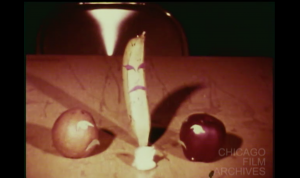
"Animated film made by four boys from St. Thomas of Canterbury grade school. "February 31st" is a colorful animation of fruit that comes to life as the sun rises on that mythical date." Chicago Film Archives
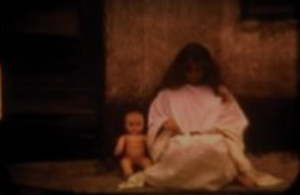
"La cinta hacía un recuento de imágenes oníricas, en los que una mujer (Paloma Woolrich) sale de su casa para recorrer diversos espacios que en realidad parecen determinados por su imaginación: desciende los escalones de una calle en una zona peatonal, se muestra aprisionada por una roca gigantesca, aparece catatónica en una azotea con un bebé de plástico, lucha con un hombre contrahecho, apalea a un hombre amarrado, duerme con su pareja y su bebé de plástico en un cementerio, aparece desgreñada en una construcción en ruinas en medio del campo, donde es burdamente pintada por otra mujer" (Vázquez Mantecón, 2012)
"The film made a recount of dreamlike images, in which a woman (Paloma Woolrich, goes out of her house to go through several spaces that actually seem determined by her imagination: she goes down the steps of a street in a pedestrian area, then she is imprisoned by a gigantic rock, she appears catatonic on a roof top with a plastic baby, she struggles with a crooked man, she beats a tied man, she sleeps with her couple and her plastic baby in a graveyard, she appears disheveled in a construction site in ruins in the middle of the country where she is roughly painted by another woman" (Vázquez Mantecón, 2012).
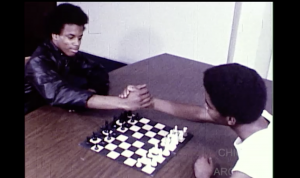
"A South Shore High School student film that is an allegory on the wastefulness of war and the duplicity of those who wage it. Filmmaker Wayne Williams, who was 17 at the time, cuts back and forth between a chess game and a guerrilla theater war game to underscore the sense of importance of the fighters and the cynicism of those who control their lives - and deaths." Chicago Film Archives
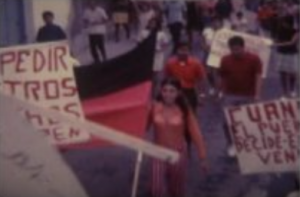
"El guión tenía una fuerte influencia de La hora de los hornos, y tendía a la explicación pedagógica de las condiciones de opresión, mostrando la diferencia entre la forma de vida de ricos y pobres y con una explicación sencilla de cómo el capitalismo sienta las bases de una explotación que finalmente es la base de las razones de la huelga [El filme muestra la huelga de Rivetex en Cuernavaca] . El título de la película (Nosotros sí existimos) jugaba con el término legal que había declarado la huelga inexistente" (Vázquez Mantecón, 2012). "The script had a strong influence of The hour of the furnaces , and it tended to a pedagogical explanation of the conditions of oppression, showing the difference between the way of life of the rich and the poor, along with a simple explanation of how capitalism sets the basis for exploitation, which is the origin of the strike [The film portrays the Rivetex strike in Cuernavaca]. The title of the film [We do exist] played with the legal term that had declared the strike non-existent" (Vázquez Mantecón, 2012).
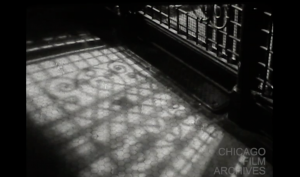
"A fickle (or is it haunted?!) elevator disrupts a man’s daily routine, ending tragically in a stairwell." Chicago Film Archives
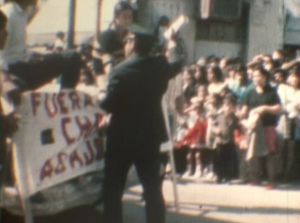
"En este cortometraje se narra la resistencia al régimen en la ciudad de Monterrey, en el estado de Nuevo León, a través de varios frentes: la irrupción de un grupo de sindicalistas independientes en el desfile oficial del 20 de noviembre, con la presencia del gobernador Luis M. Farías; la invasión de tierras y la presencia de organizaciones vecinales en Topo Chico; los muertos por un accidente laboral en la Fundidora Monterrey; las huelgas de obreros de la CTM y de panaderos de la CROC (dos poderosos sindicatos oficiales), o la actividad vecinal del Grupo 2 de Octubre en la colonia Días Ordaz" (Vázquez Mantecón, 2012).
"This short film tells the story of the resistance against the regime in Monterrey city, in the state of Nuevo León, through several perspectives: the irruption of a group of independent union laborers in the official November 20th parade, with the presence of governor Luis M. Farías; the invasion of land and the presence of neighborhood organizations in Topo Chico; the dead by a working accident in Fundidora Monterrey [Monterrey Foundry]; the strikes of CTM workers and CROC bakers (two powerful official labor unions), or the activities of neighbors of the October 2 Group in Diaz Ordaz vicinity" (Vázquez Mantecón, 2012).
Total Pages: 299